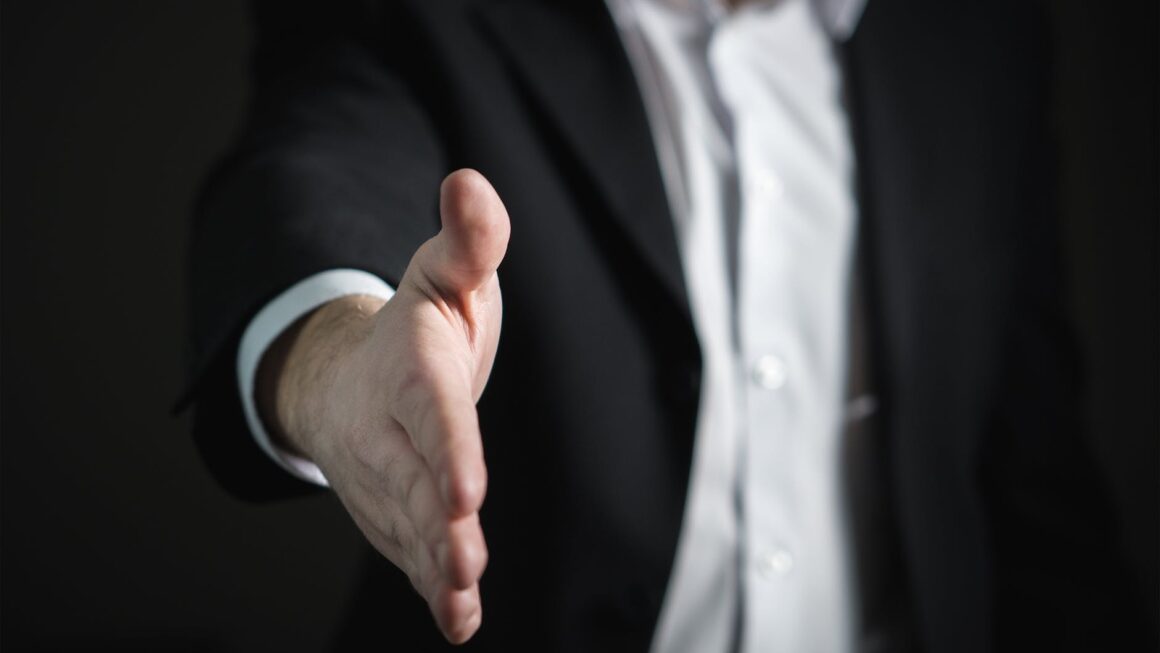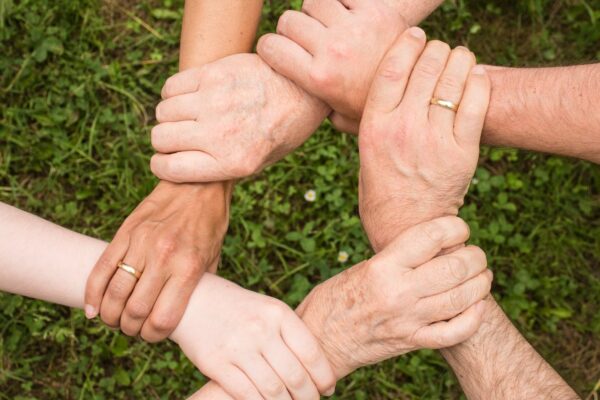A handshake is more than just a casual greeting; it is a powerful communication tool that can leave a lasting impression. A good handshake can convey confidence, trust, and respect, while a poor one can do quite the opposite. In this blog post, we will explore the importance of a good handshake and discuss the key factors that contribute to its effectiveness, including the right strength, length, personal space, and cultural awareness.
The Importance of the Handshake
A handshake serves as a universal gesture of connection and communication. It is a simple yet powerful way to establish rapport, convey respect, and initiate meaningful interactions. Whether it’s a casual encounter or a formal meeting, a handshake can leave a lasting impression and set the tone for a positive interaction.
Handshakes can also be used as a way to seal agreements or establish trust. In business settings, a firm handshake is often seen as a positive attribute, conveying professionalism and confidence. However, it’s important to note that personal boundaries and cultural norms should always be respected. Some individuals may prefer not to engage in physical contact and may opt for alternative forms of greeting, such as a nod or a verbal salutation. So, next time you extend your hand for a shake, remember its significance and the cultural nuances that may accompany it.
How to Give a Good Handshake
Firstly, it’s important to consider the firmness of your grip. A handshake should be neither too weak nor overly aggressive. Aim for a firm grip that demonstrates your confidence without crushing the other person’s hand. By maintaining a moderate pressure, you’ll convey a sense of professionalism and competence.
Secondly, pay attention to your hand position. When extending your hand for a handshake hold it perpendicular to the ground, with the thumb up and fingers out, the palm should be vertical as this shows openness and equality, creating a sense of trust and rapport. Use the palm to palm grip and give two smooth pumps, and ensure that the shake comes from the elbow and not the wrist or shoulder. Avoid turning your hand upwards, as it may give the impression of dominance, or downwards, which can be seen as submissive but be mindful of cultural differences.
Additionally, make sure your handshake is a brief but meaningful interaction. A good handshake should last around two to three seconds. This duration allows for a friendly connection without making the other person uncomfortable or feeling trapped. Remember to release your grip gently rather than abruptly ending the handshake.
Furthermore, maintain eye contact during the handshake. Looking the other person in the eye shows sincerity and engagement. However, don’t overdo it; a stare can make the other person feel uneasy. Strike a balance by looking into their eyes for a few seconds while exchanging greetings and then shifting your focus naturally.
Lastly, be mindful of your overall body language. Stand tall, face the person directly, and offer a friendly smile. A warm and genuine smile conveys approachability and positivity. Keep your body relaxed and avoid crossing your arms, as it can create a barrier and signal defensiveness.
By mastering the art of a good handshake, you can establish a positive impression and build stronger connections in both personal and professional settings. Remember, practice makes perfect, so take opportunities to refine your handshake technique and observe the nuances that make it a powerful form of communication.
Types of Handshakes
Handshakes come in various forms and can differ depending on cultural practices or the purpose of the interaction. In many Western cultures, a handshake is a common greeting gesture used in formal or professional settings. In some cultures, such as in parts of Asia or the Middle East, handshakes may be accompanied by additional gestures or practices. For instance, in Japan, a bow may be combined with a handshake as a sign of respect. In certain Arab cultures, a longer and more prolonged handshake is customary. These subtle variations highlight the importance of cultural awareness and understanding when it comes to handshakes.
The following list includes some of the most encountered types of handshakes:
- Formal Handshake: This is the most common type of handshake used in professional settings. It is typically a single, up-and-down motion with moderate strength. During a formal handshake, it is important to maintain eye contact and offer a genuine smile, conveying professionalism and approachability. By initiating this type of handshake, you are indicating respect and acknowledging the individual in a formal way.
- Double-Handed Handshake: This handshake involves using both hands. It is often used to convey warmth, respect, or a closer connection. When engaging in a double-handed handshake, one hand is clasped around the other person’s hand while the second hand is placed on top or underneath, adding an extra layer of sincerity and warmth. It can be particularly appropriate during significant occasions such as a congratulatory gesture. It is important, however, to keep in mind that while it may seem friendly, offering a handshake with both hands can be seen as excessive or insincere in certain professional settings.
- Inverted Handshake: The inverted handshake, also known as the “top hand” or “palm down” handshake, is a unique variation where one person places their hand over the other person’s hand, with their palm facing downwards instead of upwards. This handshake can carry a variety of cultural meanings and interpretations. In certain cultures, the inverted handshake may symbolize assertiveness or a display of dominance. It can be used as a way to establish authority or convey a position of power. However, it is crucial to approach the inverted handshake with caution, as it can also be seen as disrespectful or overly confrontational in many professional and social contexts.
While a good handshake can leave a positive impression, there are certain types of handshakes that should be avoided. These include:
- Bone Crusher: This handshake involves gripping the other person’s hand with excessive force. It can be uncomfortable and may come across as aggressive. Remember, a firm grip is desirable, but crushing someone’s hand is not.
- Slimy: A slimy handshake refers to a sweaty or moist hand. It can be off-putting and give the impression of nervousness or lack of confidence. If your hands tend to get sweaty, take a moment to discreetly wipe them before offering a handshake.
- The Finger Tip Holder: This handshake involves barely touching the other person’s fingertips, rather than fully grasping their hand. It can convey disinterest or lack of engagement, and may come across as insincere or dismissive.
- The Dead Fish: A dead fish handshake refers to a limp and unenthusiastic grip. It lacks firmness and can make the other person feel like they are holding a lifeless hand. This type of handshake can give the impression of indifference or lack of confidence.
The style, strength, and duration of a handshake can vary depending on the context, relationship between individuals, and cultural customs. It’s always essential to be mindful and adapt accordingly to ensure a positive and respectful interaction. Overall, when in doubt, it is recommended to stick to more commonly accepted handshakes, such as the formal handshake, in professional settings to avoid any potential misinterpretations or misunderstandings.
Do’s and Don’ts of Handshakes
To ensure your handshake has a positive impact, keep the following do’s and don’ts in mind:
The Do’s
- Make eye contact: Look the person in the eye as you extend your hand. This shows respect and engagement.
- Use a firm grip: A firm handshake demonstrates confidence and professionalism. However, be mindful not to squeeze too tightly, as it may come across as aggressive.
- Be mindful of the timing: Handshakes are typically initiated by the more senior person or the person hosting the event. Wait for them to extend their hand first before reciprocating.
- Mirror the other person: If the other person’s handshake is more gentle or firm, try to match their grip strength. This helps create a sense of connection and rapport.
- Keep it brief: A handshake should last around 2-3 seconds. Anything longer can become awkward and uncomfortable in some cultures while in others would be acceptable. Be culturally savvy.
The Don’ts
- Avoid a weak grip: A limp or weak handshake may be perceived as lacking confidence or enthusiasm. Aim for a balance between firmness and gentleness.
- Don’t rush it: Give the other person enough time to complete the handshake before you release your grip. Abruptly pulling away can be rude.
- Don’t offer a sweaty hand: If your hands are sweaty, take a moment to discreetly wipe them before offering a handshake. No one wants to shake a moist hand. A trick is to use some antitranspirant on the hands before any meeting or event.
- Avoid excessive shaking: Shaking the other person’s hand vigorously or repeatedly can be seen as overly enthusiastic or even aggressive, so keep it moderate.
- Skip the double handshake if you can: While it may seem friendly, offering a handshake with both hands can be seen as excessive or insincere in certain professional settings.
A handshake is an opportunity to make a positive first impression. Avoiding these faux-pass will ensure that your interactions are professional, respectful, and leave a lasting impression for all the right reasons. Practice your handshake to ensure it reflects your professionalism and leaves a lasting impression.
Final Thoughts
In conclusion, a good handshake is more than a fleeting moment of physical contact. It is a powerful tool that can help establish trust, create a positive first impression, and foster stronger connections. By mastering the art of a good handshake, taking cultural considerations into account, and adhering to proper etiquette, you can leave a lasting positive impression in any social or professional setting.
So, next time you extend your hand, remember the importance of a good handshake, and make it count!




